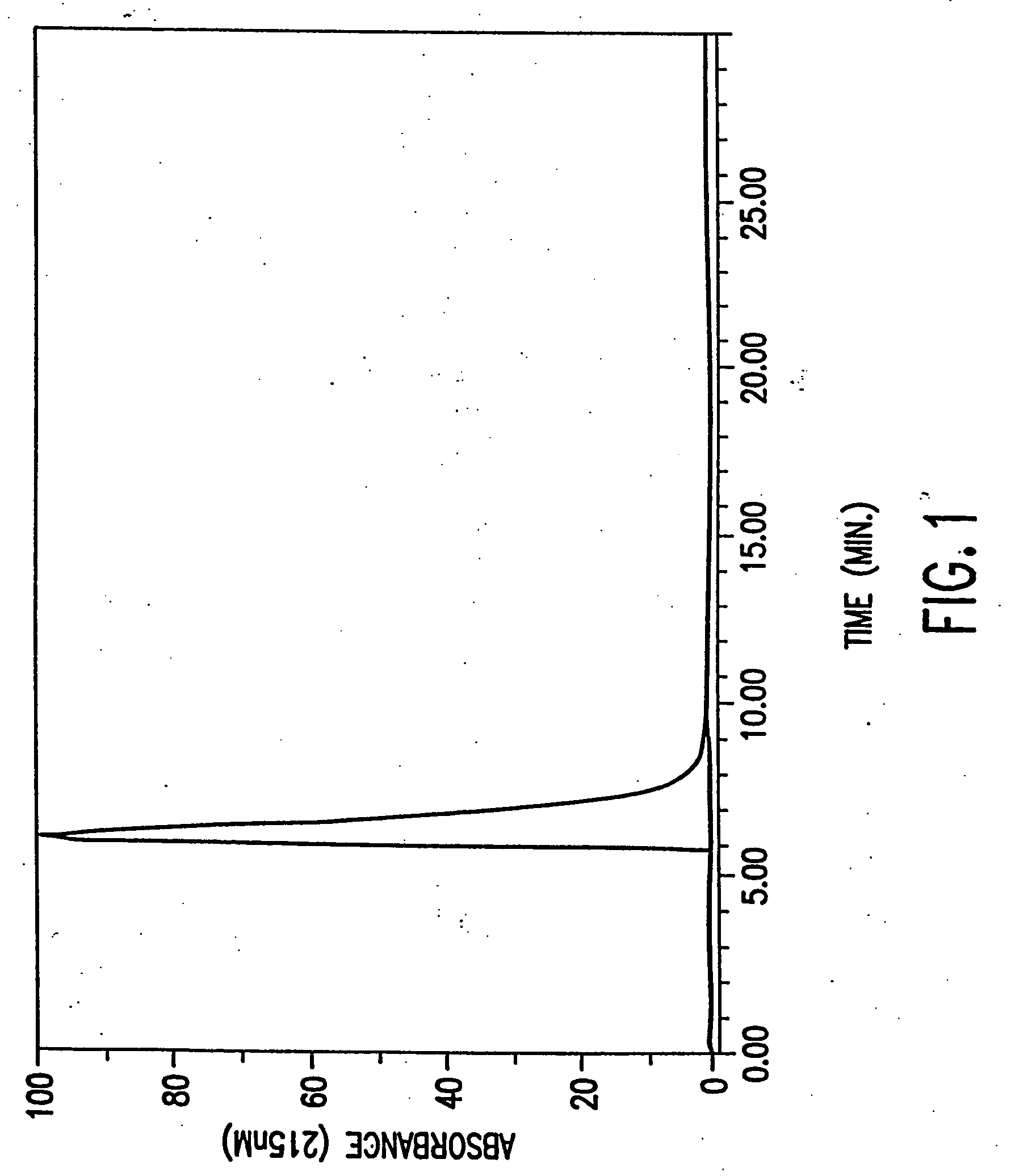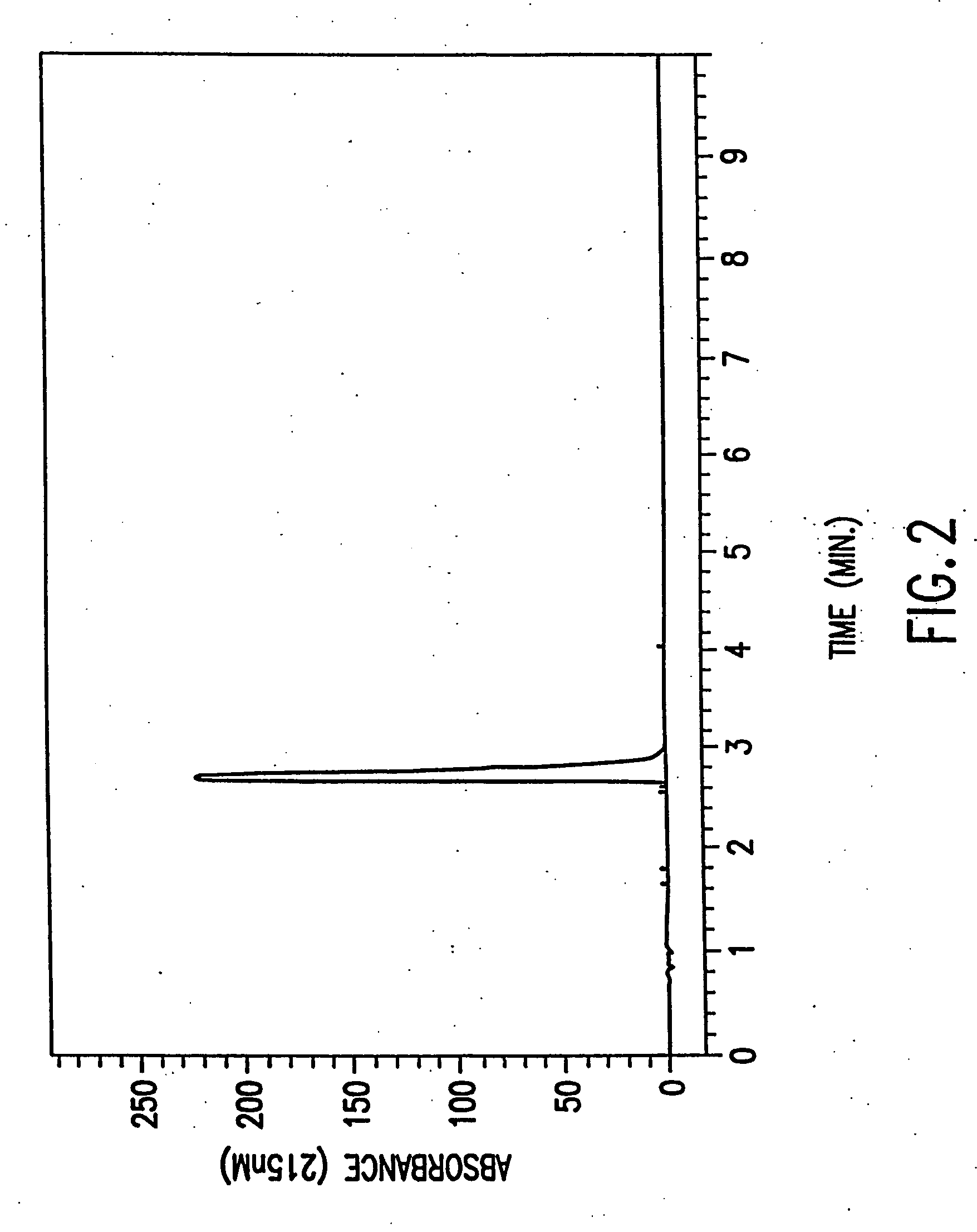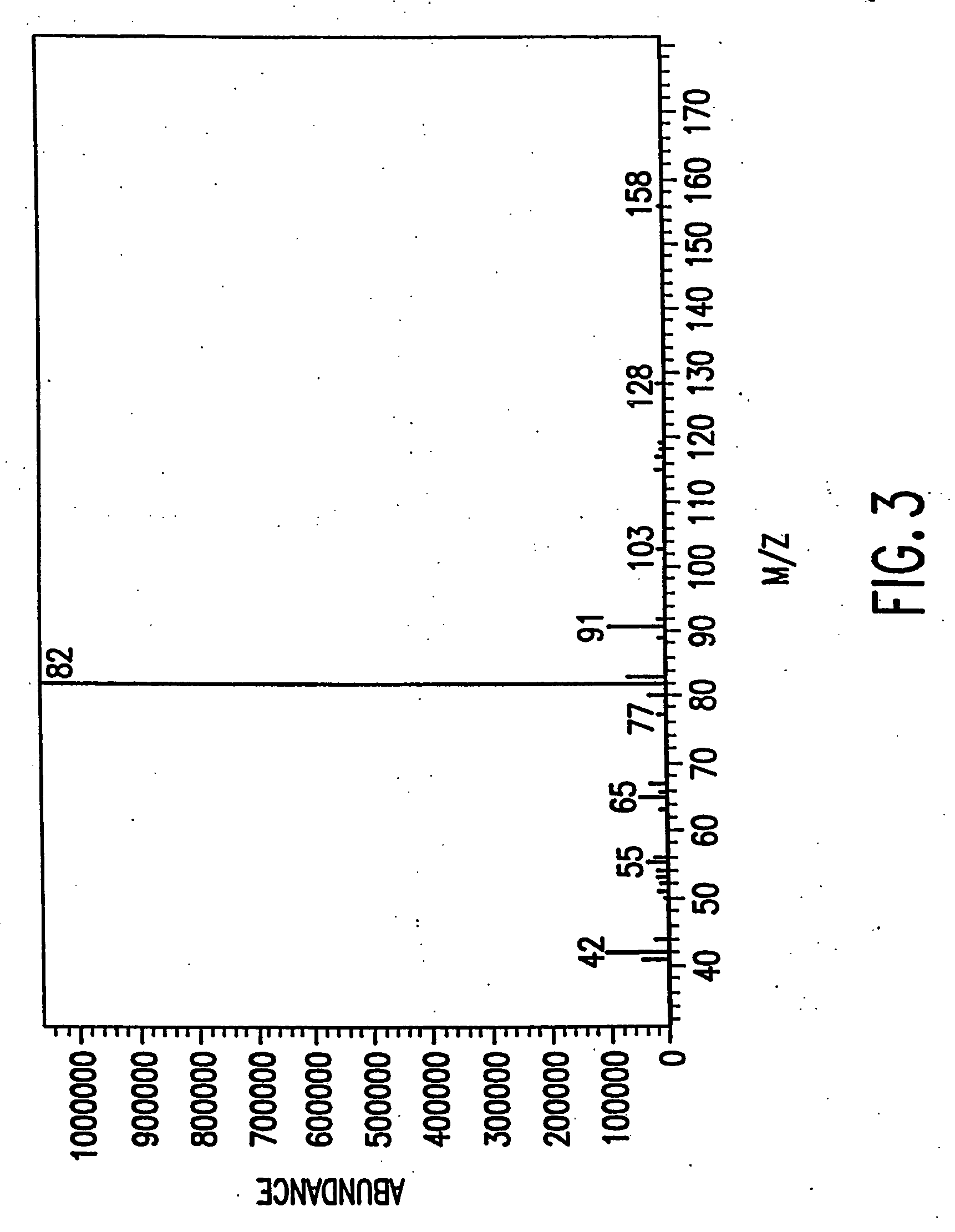Methods for treating cerebrovascular disease by administering desmethylselegiline
- Summary
- Abstract
- Description
- Claims
- Application Information
AI Technical Summary
Benefits of technology
Problems solved by technology
Method used
Image
Examples
example 1
Preparation of R(−)DMS and S(+)DMS
[0101] A. R(−)-desmethylselegiline
[0102] R(−)DMS is prepared by methods known in the art. For example, desmethylselegiline is a known chemical intermediate for the preparation of selegiline as described in U.S. Pat. No. 4,925,878. Desmethylselegiline can be prepared by treating a solution of R(−)-2-aminophenylpropane (levoamphetamine):
in an inert organic solvent such as toluene with an equimolar amount of a reactive propargyl halide such as propargyl bromide, Br—CH2—C≡CH, at slightly elevated temperatures (70°-90° C.). Optionally the reaction can be conducted in the presence of an acid acceptor such as potassium carbonate. The reaction mixture is then extracted with aqueous acid, for example 5% hydrochloric acid, and the extracts are rendered alkaline. The nonaqueous layer which forms is separated, for example, by extraction with benzene, dried, and distilled under reduced pressure.
[0103] Alternatively the propargylation can be conducted in a ...
example 2
Characteristics of Substantially Pure R(−)DMS
[0110] A preparation of substantially pure R(−)DMS has the appearance of a white crystalline solid with a melting point of 162-163 C. and an optical rotation of [α]D23c=−15.2±2.0 when measured at a concentration of 1.0 M using water as solvent. R(−)DMS appeared to be 99.5% pure when analyzed by HPLC on a Microsorb MV Cyano column (see chromatogram in FIG. 1) and 99.6% pure when analyzed by HPLC on a Zorbax Mac-Mod SB-C 18 column, (see chromatogram in FIG. 2). No single impurity is present at a concentration greater than or equal to 0.5%. Heavy metals are present at a concentration of less than 10 ppm and amphetamine hydrochloride at a concentration of less than 0.03%. The last solvents used for dissolving the preparation, ethyl acetate and ethanol are both present at a concentration of less than 0.1%. A mass spectrum performed on the preparation (see FIG. 3) is consistent with a compound having a molecular weight of 209.72 amu and a form...
example 3
Characteristics of Substantially Pure S(+)DMS
[0111] A preparation of substantially pure S(+)DMS has the appearance of a white powder with a melting point of approximately 160.04° C. and a specific rotation of +15.1 degrees when measured at 22° C. in water, at a concentration of 1.0 M. When examined by reverse phase HPLC on a Zorbax Mac-Mod SB-C18 column the preparation appears to be about 99.9% pure (FIG. 6). Amphetamine hydrochloride is present at a concentration of less than 0.13% (w / w). A mass spectrum is performed on the preparation and is consistent with a compound having a molecular weight of 209.72 and a molecular formula of C12H15N.HCI(see FIG. 7). Infrared spectroscopy is performed and also provides results consistent with the structure of S(+)DMS (see FIG. 8).
PUM
| Property | Measurement | Unit |
|---|---|---|
| Frequency | aaaaa | aaaaa |
| Frequency | aaaaa | aaaaa |
| Fraction | aaaaa | aaaaa |
Abstract
Description
Claims
Application Information
 Login to View More
Login to View More - R&D
- Intellectual Property
- Life Sciences
- Materials
- Tech Scout
- Unparalleled Data Quality
- Higher Quality Content
- 60% Fewer Hallucinations
Browse by: Latest US Patents, China's latest patents, Technical Efficacy Thesaurus, Application Domain, Technology Topic, Popular Technical Reports.
© 2025 PatSnap. All rights reserved.Legal|Privacy policy|Modern Slavery Act Transparency Statement|Sitemap|About US| Contact US: help@patsnap.com



